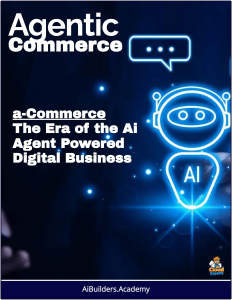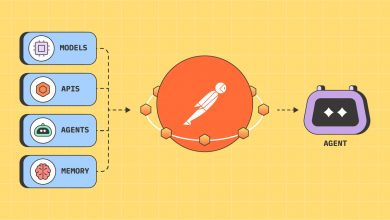What is Conversational Commerce?
By enabling shopping directly through chat platforms like WhatsApp or voice devices like Google Assistant, conversational commerce makes the experience more intuitive and accessible.
 Conversational commerce represents a transformative approach to e-commerce, leveraging messaging apps, chatbots, voice assistants, and advanced AI technologies to create seamless, human-like interactions that guide customers through the shopping process.
Conversational commerce represents a transformative approach to e-commerce, leveraging messaging apps, chatbots, voice assistants, and advanced AI technologies to create seamless, human-like interactions that guide customers through the shopping process.
Coined by Uber’s Chris Messina in 2015, this paradigm integrates natural language processing and machine learning to facilitate product discovery, customer support, transactions, and ongoing engagement within conversational interfaces.
By enabling shopping directly through chat platforms like WhatsApp or voice devices like Google Assistant, conversational commerce makes the experience more intuitive and accessible, aligning with the broader trend of “agentic commerce,” where AI autonomously handles tasks to streamline transactions.
Etsy, a leading marketplace for handmade and vintage goods, is harnessing Google Cloud AI to enhance its platform in ways that align with conversational commerce principles. Since migrating its infrastructure to Google Cloud in 2020, Etsy has leveraged tools like Vertex AI and BigQuery to optimize search algorithms and deliver highly personalized product recommendations to its over 90 million buyers.
These AI-driven capabilities enable Etsy to tailor the shopping experience, ensuring customers find relevant items quickly, such as suggesting a handwoven wall hanging based on a buyer’s preference for boho decor. While specific examples of Etsy deploying chatbots or voice assistants are not widely documented, its use of Google Cloud’s scalable infrastructure, including Compute Engine and Cloud Run, supports the potential for conversational interfaces that could handle high traffic volumes during peak shopping seasons like Black Friday.
This infrastructure has already reduced Etsy’s compute energy usage by over 50% and costs by 42%, freeing resources to invest in customer-focused innovations.
The potential for conversational commerce on Etsy is significant, particularly with Google Cloud’s advanced AI tools. For instance, Vertex AI Search for Commerce could power a chatbot on Etsy’s website, interpreting queries like “find me a vintage leather journal” and delivering curated results based on user data.
Similarly, integration with Google’s Dialogflow or Vertex AI Agent Builder could enable real-time customer support, answering questions about shipping or seller policies with data pulled from Etsy’s backend via BigQuery. Looking ahead, Google’s Agent2Agent (A2A) protocol could position Etsy to adopt agentic commerce, where AI agents autonomously manage tasks like order processing or inventory updates, enhancing efficiency for both buyers and sellers.
Such advancements would build on Etsy’s existing ability to run experiments twice as fast using Google Cloud’s analytics, allowing for real-time optimization of product listings.
Beyond Etsy, conversational commerce is reshaping industries. Retailers like Sephora use chatbots on Facebook Messenger to offer beauty tips and drive sales, while Walmart integrates with Google Assistant for voice-based grocery reordering. In travel, Expedia’s WhatsApp chatbot helps users book flights, and in food, Domino’s allows pizza orders via Alexa.
These examples highlight the versatility of conversational commerce in creating instant, personalized interactions that boost engagement and conversions. However, challenges remain, including the complexity of integrating AI with e-commerce systems, ensuring user adoption for conversational interfaces, and addressing privacy concerns under regulations like GDPR. Etsy’s visual marketplace, where browsing images is central, may require careful design to balance conversational and traditional shopping experiences.
As conversational commerce evolves, trends like generative AI, omnichannel integration, and the rise of voice commerce are shaping its future. With 50% of U.S. households projected to own smart speakers by 2025, platforms like Etsy could integrate with Google Home to enable voice-based browsing of its marketplace.
The shift toward agentic commerce, supported by Google’s A2A protocol, further promises autonomous AI interactions that could streamline Etsy’s operations, from negotiating with sellers to managing supply chains.
By continuing to leverage Google Cloud AI, Etsy is well-positioned to enhance its marketplace with conversational tools, making shopping for unique items more engaging and efficient while paving the way for a future where AI agents play a central role in commerce.



